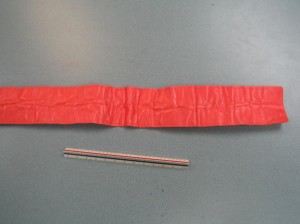The information posted on this blog is for learning purposes only. To learn to effectively manage victims with broken wrists enrol into workplace approved first aid classes. Before treating a broken wrist, you must learn how to recognize it. Often wrist injuries are very painful but they are usually not very severe if treated promptly. Wrist injuries usually occur due to accidents, falls, assaults, fights, sports injuries and other forms of physical trauma.
Symptoms
- Pain
- Swelling
- Deformity of the wrist
- Bruising
- Tingling sensation or numbness
- Inability to move the wrist
- Broken skin may show the bone
Treatment
In case of a broken wrist injury, do not panic. Broken wrists often hurt a lot but are treatable injuries that are very rarely fatal. If someone suffers from a wrist injury due to assault, accidents or any other form of trauma, follow these steps:
- Make sure that the area the person is affected in is a safe zone for you. Wrist injuries may occur due to car accidents and you do not want to rush towards a casualty on a busy road.
- Next step is the ABCs of first aid: Awake? Breathing? Continuous care.
An effective method of immobolizing a broken wrist is by using a soft splint such as the one posted above. - If the casualty is awake, continue with the normal basic first aid steps.
- Control the bleeding by applying pressure on the wounds with a sterile bandage or clean piece of cloth.
- You may use an ice pack to alleviate pain and swelling for 15 minutes.
- Do NOT move the victim if you suspect that his head back or neck has been affected or injured.
- Cover the wounds with a sterile bandage. If possible, wash the wound thoroughly with water or saline solution—this is especially important if the wound is contaminated with dirt or debris.
- In case of open wounds, take the casualty to a doctor for stitches.
- If bleeding is heavy and persistent, take the casualty to a doctor.
- If you are waiting for medical help or an ambulance to arrive and it taking too long, it will be necessary to splint the injury.
- Check how the circulation has been affected by comparing the affected hand with the unaffected one. Look for color changes. Check his sensation by asking him which finger or part of his hand you are holding. Check the motion by asking the casualty to wiggle his fingers.
- To splint the injured wrist, make sure you immobilize the hand and do not secure the wrist too tight. Be sure to properly secure the hand to avoid pressure buildup.
- After you are done splinting the hand, check the circulation, sensation and movement again by following the same procedures as before.
- If the casualty is unconscious, check for signs of circulation such as breathing and movement. If you detect no breathing, begin CPR till help arrives.
Caution
- Do NOT move the casualty if his neck, back or head has been injured.
- Call for emergency medical help in case of a broken hip or pelvis, a broken leg (above the knee area), a head, back or neck injury.
- Make sure you have someone call emergency medical help, even in the case of a broken wrist and follow the procedures above, if help is taking too long to arrive.
- Always consider safety first and practice universal precautions. Make sure you are entering a safe zone and protect yourself completely, if your safety is threatened. Wear protective equipment, gloves, masks, goggles, if necessary.
Additional Information Via Training Video

